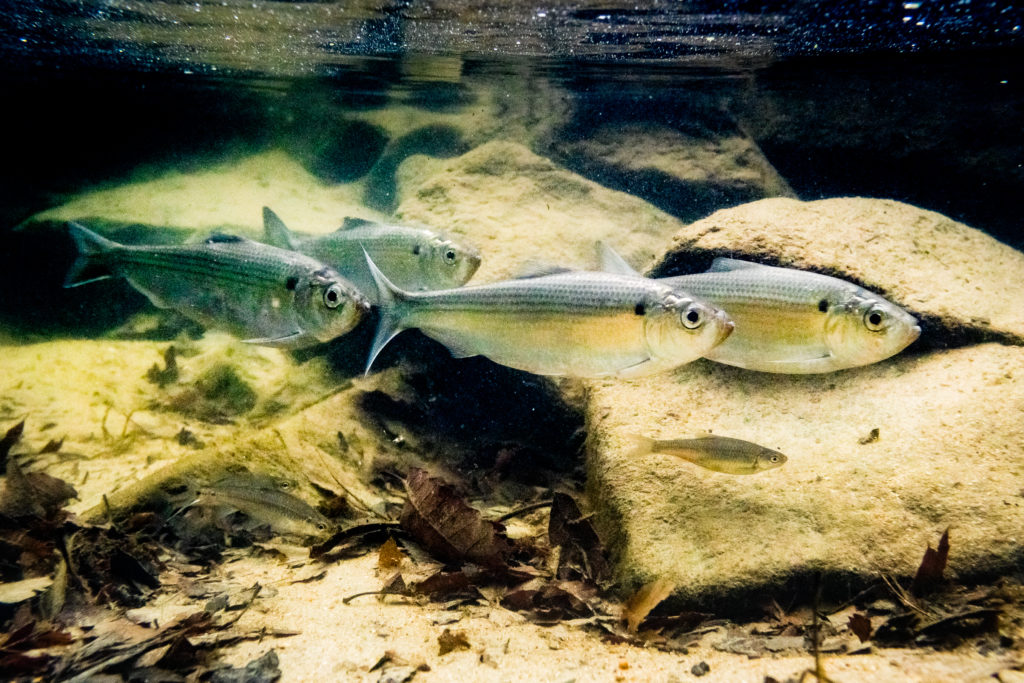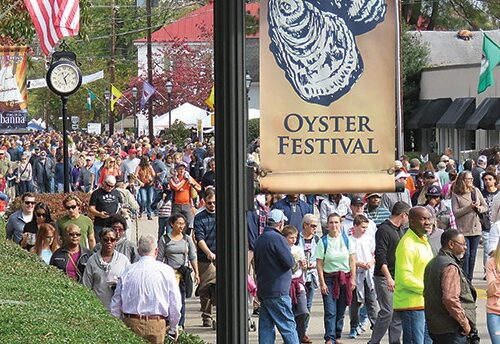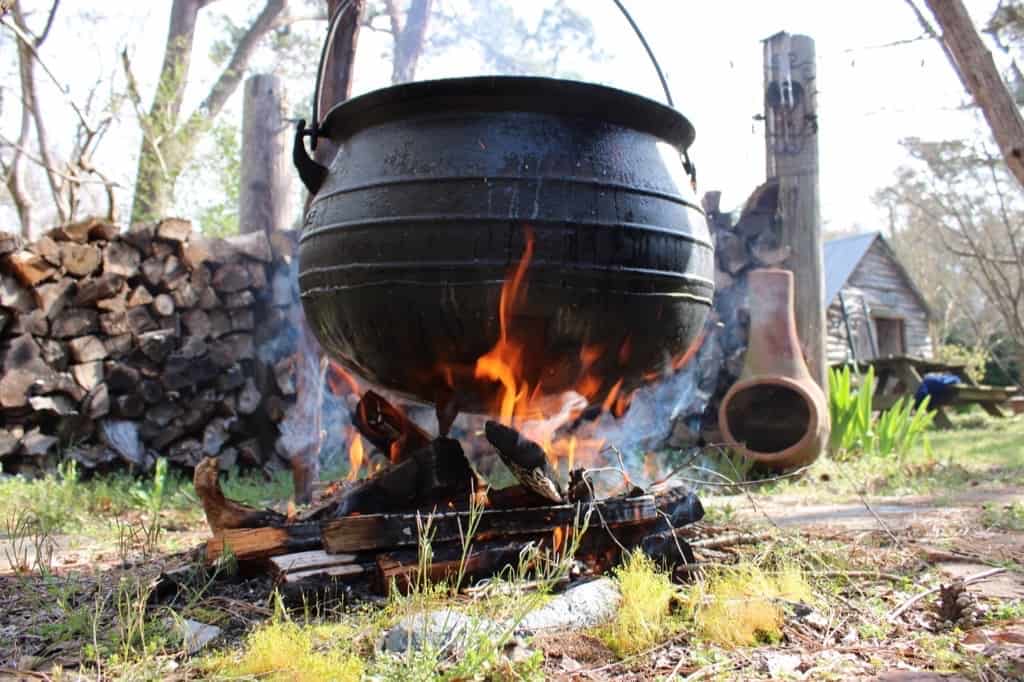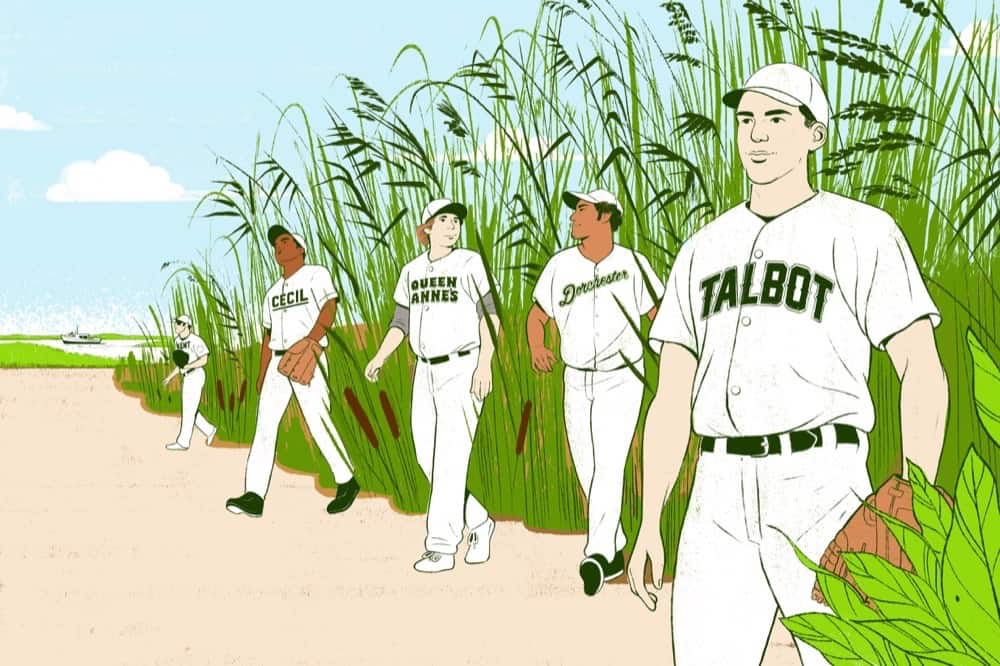Atlantic menhaden are crucially important members of the vast food web in the Chesapeake Bay and its adjacent Atlantic coastal waters. But they aren’t the only important fish in our Bay. We, humans, should eat a variety of foods to avoid becoming dependent on only one source and to fill a wide range of nutritional needs. So, for similar reasons, should the predator fish in the Chesapeake and the Atlantic also feed on a variety of forage fish and shellfish.
The numbers of available species vary from season to season and year to year, so food webs are the healthiest and most stable with multiple members at each level.
There’s a good reason why ecologists sometimes describe food webs as food pyramids, with broad bases that become narrower going up. At the bottom of the Chesapeake’s pyramid are the trillions and trillions of producers—plants that convert water, carbon dioxide, minerals and sunlight into the organic molecules that make life possible. These plants come in all sorts and sizes from microscopic, drifting algae (phytoplankton) to 6-foot-long underwater vegetation like widgeon grass. Sunlight and photosynthesis allow the Chesapeake’s vegetation to grow a truly ginormous, continuous biomass of producers.
Herbivores eat plants, either exclusively or primarily. At the microscopic level, in the drifting zooplankton, live multiple species of the most abundant animals in the Chesapeake ecosystem—tiny crustaceans called copepods. Copepods graze on algae. Other Bay herbivores include filter feeders like oysters, hooked mussels and first-year (“peanut”) menhaden, which filter phytoplankton with feather-like structures in their gills as they swim through the water.
Another grazer is the grass shrimp, which scrapes off algae that grow on wooden structures like fallen trees and docks. Grass shrimp have about as many fishy friends as soft crabs. Because a single herbivore eats multiple types of plants, the biomass of herbivores in the Chesapeake system, though still gigantic, is only about 10 percent of the plant mass.
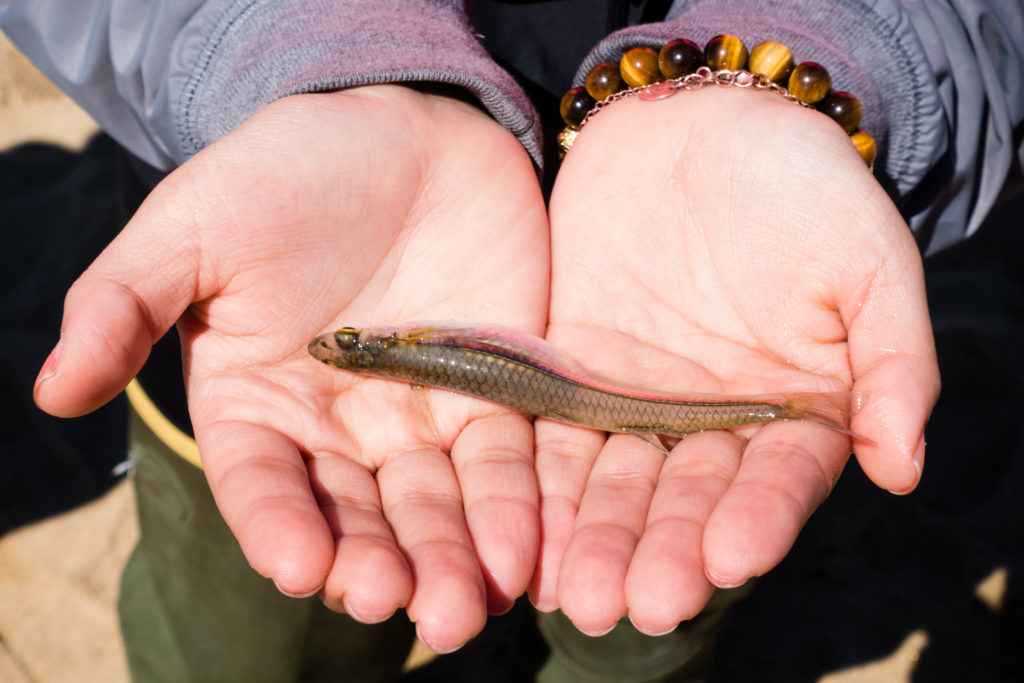
Carnivores eat other animals. They might be baby rockfish, chasing down copepods, or older menhaden, which swim through clouds of zooplankton, catching them in their gills. One fierce but small predator of zooplankton is the Bay anchovy, the single most abundant species of fish in the Chesapeake.
What the Chesapeake’s carnivorous fish eat depends on their body structure. Consider, for example, the striped bass and the Spanish mackerel. Our beloved rockfish are generalized predators. Their mouths and eyes are large, handle prey of multiple sizes, and feed effectively in low light. Their bodies are strong and streamlined for long coastal migrations, but their broad tails equip them well for maneuverability and acceleration for ambushing prey disoriented by tidal currents around marsh points, boulders, wrecks, and navigation aids. Yes, they love menhaden for their high-calorie oil and protein content, but they also love herring of all species and eels for the same reason. In the Chesapeake, they love young Norfolk spot and Atlantic croakers, along with killifish, silversides, small mud crabs of multiple species, grass shrimp, and, like us, soft crabs.
Spanish mackerel, on the other hand, are pelagic, built for open-water speed in straight lines and long migrations. They’re even known, like their larger cousins the king mackerel, to vault high into the air to land teeth-first on pods of prey fish. In the Chesapeake, they particularly concentrate on bay anchovies, whose schooling patterns of dimples on the surface have given them the nickname rain bait. Much as Spanish mackerel love rain bait, they also enthusiastically chase down other small schooling fish like “peanut” menhaden, silversides, needlefish, mullet, and herring.
Another part of the food web is the detritivores or debris-feeders. This broad class of creatures eats material that is dead but was once alive. Sounds pretty gross, but every ecosystem, the Chesapeake very much included, offers a huge quantity of detritus, both plant and animal. A land-based example would be the earthworm, literally eating its way through the soil, absorbing calories from dead material and passing inorganic material straight through.
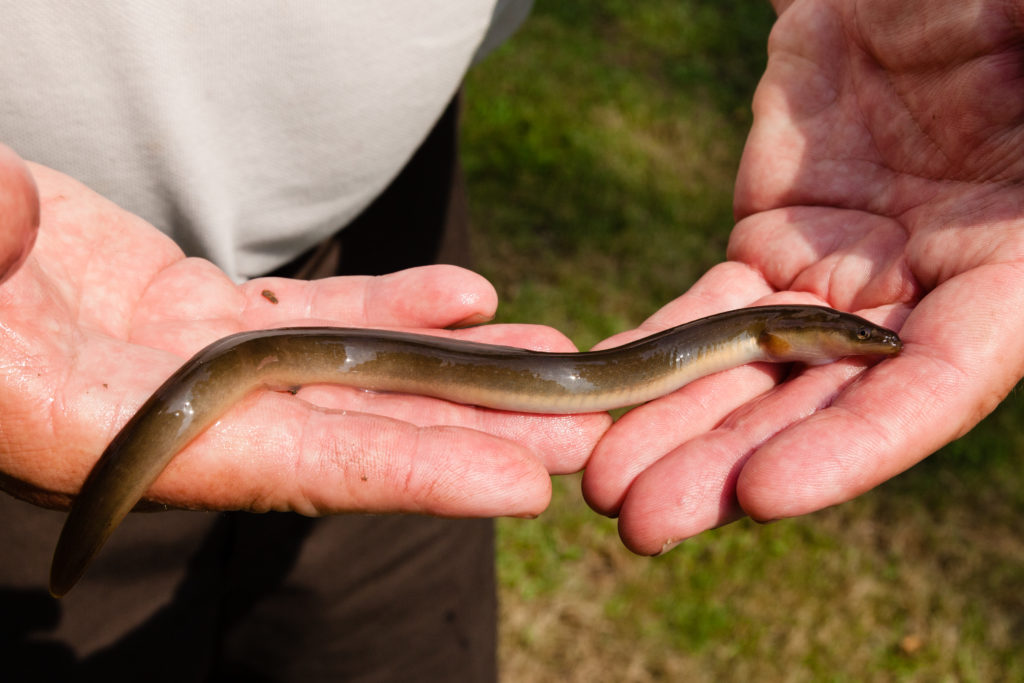
The Bay’s most prominent detritivore is our beloved blue crab, but mud crabs do so, too. One of the most important and abundant forage fish of the upper tidal rivers, where the salinity is low, is the gizzard shad (also known as mud shad), which sieves out detritus by literally grubbing in the river bottom. Distantly related to menhaden, shad and herring, mud shad find plenty to eat in our waterways. Their flesh is oily, and packed full of calories and protein, not only for full-time river residents like blue catfish and largemouth bass but also for seasonal transients like rockfish.
The Bay’s marine worms are also detritivores. Ever use bloodworms for bait? What did you catch on them? Probably just about every predator species in the Chesapeake’s repertoire. The bloodworms sold in bait shops come from New England, but our Bay system grows several native species of these bristle worms, perhaps best known as the small, pink worms that forage on oyster reefs and the “mayworms” that swarm for spawning in the late spring, a fascinating spectacle and a feast for rockfish. All along the Atlantic coast, bristle worms form an important segment of the food web. Here in the Chesapeake, we can ensure a strong stock of them by restoring oyster reefs. Ditto for three tiny fish that also forage and hide in the reefs: gobies, blennies, and skilletfish.
Learning about these forage species is great for fishing, but the lesson doesn’t stop there. The easiest way to study them first-hand is a great summertime activity, especially for families: pulling a 20- to 30-foot minnow seine through shallow water along a Bayside beach or marsh bank. You’ll be astounded and delighted at all of the life that is swimming in our waters. If you are not already familiar with these forage critters, you’ll see a whole new world of Chesapeake knowledge opening up. A seine net with a couple of poles will cost less than $75 bought either from a local tackle shop or online. The last piece of gear for seining is a good field guide. The richly illustrated, informative classic is Life in the Chesapeake Bay by Alice Jane and Robert L. Lippson, published by the Johns Hopkins University Press. It’s readily available online and in local bookstores, both new and used.
These other forage fish, crustaceans, and worms are also vital to the Chesapeake and Atlantic coastal food web. Shad, herring and eels, in particular, are much depleted, confronting challenges as serious as the ones facing menhaden. They deserve our attention as much as menhaden because strong stocks of all of them are critical to a strong, balanced Chesapeake.

